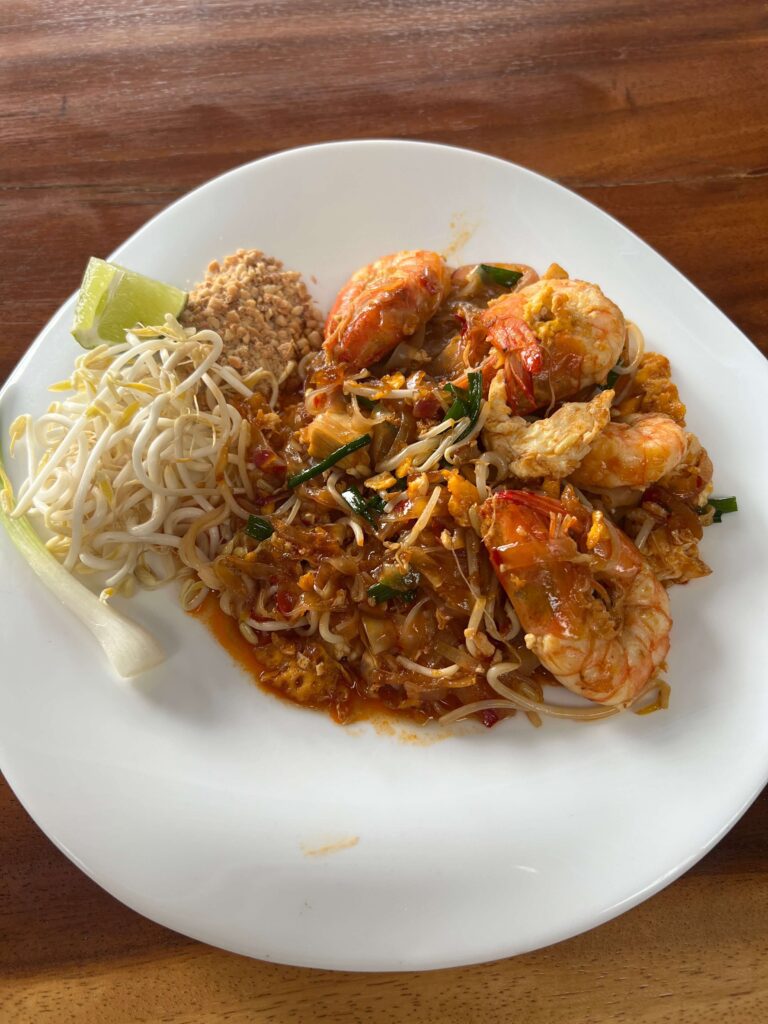Pad Thai and Ramen are two popular noodle dishes that originated from different parts of Asia. Pad Thai originated in Thailand in the 1940s and is made primarily with rice noodles, bean sprouts, tofu, shrimp or chicken, scrambled eggs, and a sauce made from tamarind, fish sauce, palm sugar, and vinegar. Ramen is a Japanese dish that originated in China and is traditionally made with wheat noodles in a meat, chicken, or fish-based broth, topped with sliced pork or beef, dried seaweed, and green onions. While Pad Thai has a sweet and sour taste, Ramen is savory and rich in umami flavor. Both dishes can be healthy if prepared with lean protein and fresh vegetables.
Pad Thai vs. Ramen: A Noodle Showdown
Introduction
Noodles are a beloved staple in many cultures, with countless variations found across the globe. Among the most popular are Pad Thai and Ramen, two noodle dishes hailing from different parts of Asia. While both are delicious, they have some distinct differences that set them apart. In this article, we will explore both dishes and compare and contrast them in different categories.
Origins
Pad Thai: Pad Thai originated in Thailand in the 1940s. The dish became popular because of the government’s efforts to promote the use of rice noodles, which were cheaper than wheat noodles. Today, Pad Thai is considered one of Thailand’s national dishes.
Ramen: Ramen is a Japanese dish that originated in China. Ramen’s name comes from the Chinese words “la mian,” which means pulled noodles. In Japan, Ramen became popular after World War II as an affordable and filling meal.
Ingredients
Pad Thai: Pad Thai is made primarily with rice noodles, bean sprouts, tofu, shrimp or chicken, scrambled eggs, and a sauce made from tamarind, fish sauce, palm sugar, and vinegar. It is typically garnished with peanuts, lime wedges, and cilantro.
Ramen: Ramen traditionally consists of wheat noodles served in a meat, chicken, or fish-based broth, topped with sliced pork or beef, dried seaweed, and green onions. The broth can be prepared with a variety of seasoning, including soy sauce, miso, and salt.
Preparation
Pad Thai: Pad Thai is typically stir-fried in a wok or a pan. The noodles are first soaked in water before being added to the wok with the other ingredients. The sauce is added last and mixed in with the other ingredients before serving.
Ramen: Ramen is usually boiled in water for a few minutes until the noodles soften. The broth is prepared separately and poured over the cooked noodles, and the other toppings are added to the bowl.
Flavor
Pad Thai: Pad Thai has a sweet and sour taste due to the combination of tamarind, vinegar, and palm sugar in the sauce. The noodles have a slightly chewy texture, and the dish is typically garnished with peanuts and lime wedges.
Ramen: Ramen has a savory umami flavor due to the broth, which is often made with soy sauce, miso, or other seasonings. The noodles have a soft and springy texture, and the dish is served with a variety of toppings that add layers of flavor and texture.
Health Benefits
Pad Thai: Pad Thai can be a healthy choice if it is prepared with lean protein and plenty of vegetables. The dish is low in fat and calories, but the sauce can be high in sodium and sugar.
Ramen: Ramen can be less healthy than Pad Thai, as many varieties of instant ramen are high in sodium and calories. However, homemade ramen can be a healthy option if the broth is made from scratch and the toppings are fresh and nutritious.
Conclusion
While Pad Thai and Ramen may seem similar at first glance, they have some distinct differences that set them apart. Pad Thai has a sweet and sour taste, while Ramen is savory and rich in umami flavor. The ingredients and preparation methods also vary between the two dishes. Regardless of which one you prefer, both Pad Thai and Ramen are delicious and comforting noodle dishes that are enjoyed all around the world.
